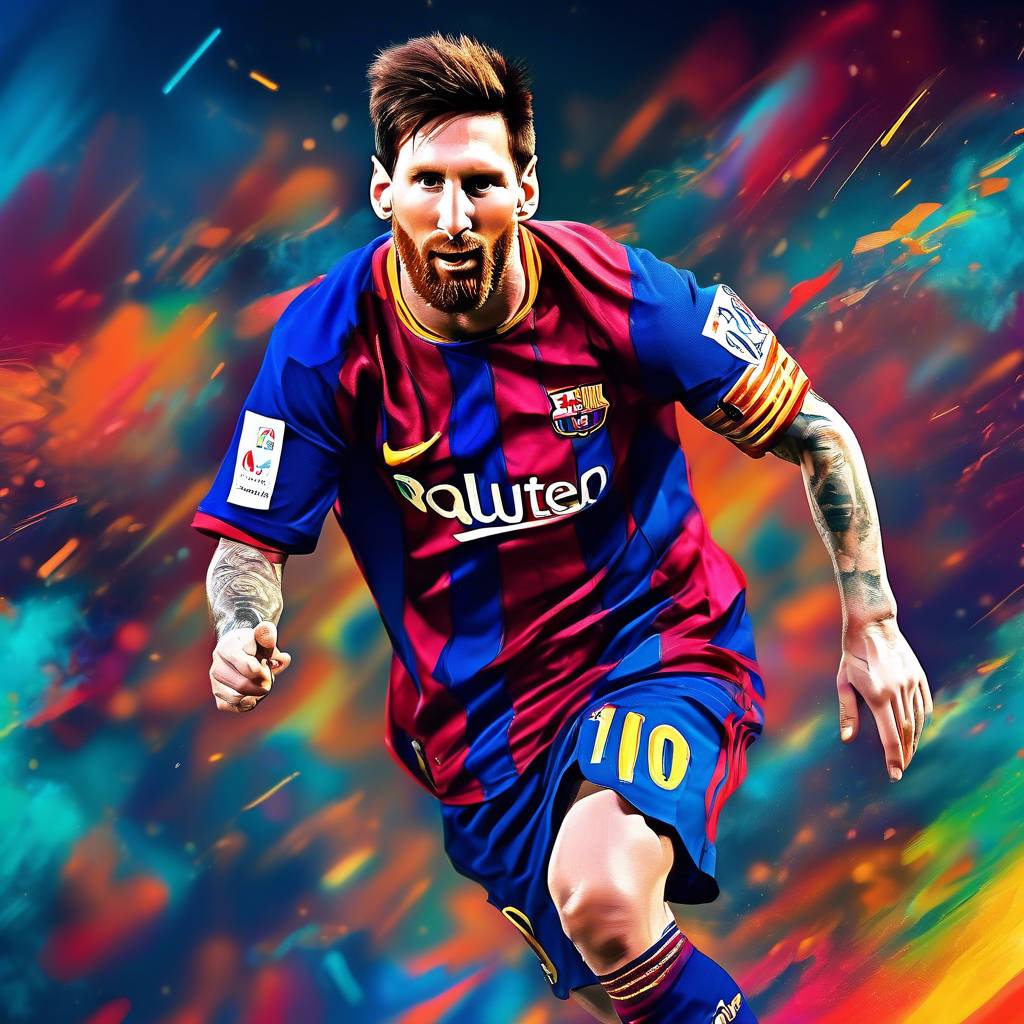Jorge Mas took a risky but lucrative bet on Lionel Messi and quickly transformed Inter Miami into the second billionaire franchise in MLS. But the world won’t be at their feet for long.
Inside the AquaDome, a spherical atrium on the world’s largest cruise ship, Jorge Mas settles into his seat for what promises to be a grand spectacle. The billionaire owner of Inter Miami is on board Royal Caribbean’s “Icon of the Seas” cruise ship to unveil his club’s new jersey, part of the Major League Soccer, sponsored by the cruise company. There is a variety of talent set to perform during the ship’s naming ceremony, including a Scottish band, water acrobats, and the biggest attraction of the day: soccer star, Argentine Lionel Messi.
For Inter Miami, such fanfare was unthinkable. Just ten months ago, it was a club at the bottom of the highest level of professional soccer in the US, valued at $600 million, just above the league average, with minimal global fame despite being partially owned by David Beckham. Now, “you have to be living under a rock not to know that Lionel Messi plays for Inter Miami,” says Mas, 61.
Getting Messi was not cheap, even if his salary at Inter Miami is much lower compared to the $400 million per year offer that the Argentine rejected from the Saudi Pro League. Mas says Messi will earn between $50 and $60 million in guaranteed money annually, with the potential to earn more through individual contracts with Apple and Adidas revenue sharing. Messi also has the option to be a part owner of the club, which does not require a direct purchase if he exercises the option. But the franchise, based in South Florida, has already shown that the reward was worth much more than the financial risk.
During 2023, with just half a season with Messi, Inter Miami more than doubled its revenue to $118 million. The club expects to surpass $200 million this year thanks to ticket sales, driven by Messi’s arrival, lucrative advertising partnerships, and a world tour during preseason that reached countries in Asia for the first time. Messi’s arrival also doubled MLS Season Pass subscriptions, the deal between Apple TV and the league, last year and teams hosting Inter Miami saw massive increases in ticket sales (and prices). Forbes estimates that Inter Miami is now the second most valuable club in MLS, worth just over $1 billion US dollars. Mas, owning approximately 80% of the club, has increased his fortune to $1.7 billion.
Mas’s unlikely rise to possibly the most important deal in US soccer history is the result of his unwavering, if initially irrational, faith that he would eventually land the eight-time Ballon d’Or winner. But as much as Messi’s arrival has opened a window of opportunity for his team, Mas now faces another challenge: the 36-year-old forward will not play forever, and his inevitable departure threatens to undo the club’s progress. “We understand the opportunity ahead,” says Mas. “[We need to] make sure we keep the fans, with Messi or without Messi.”
In hindsight, Mas is the unlikely architect of possibly the most significant deal in US soccer history, especially considering that sports was not his first love. The son of Cuban refugees raised in Miami grew up as a baseball fan aspiring to play in college until, according to Mas, a knee injury shattered his dream. Instead, he studied business at the University of Miami and then joined the family construction business with his father, Jorge Mas Canosa, a legendary leader in the Cuban exile community.
The arrival of young Mas marked the beginning of a period of evolution for the company, incorporating computers and automating its billing systems. When Hurricane Andrew devastated South Florida in 1992, Mas seized the opportunity to rebuild the state’s infrastructure. He laid the groundwork for a reverse merger that created MasTec in 1994. Today, the New York Stock Exchange-listed company generates $12 billion in annual revenue. Like many ultra-rich sports fans, Mas often dreamed of owning a team. “The Holy Grail would have been to own the Miami Dolphins [of the NFL], but life has taken me where I should be,” he says. His moment came in 2018, after a failed attempt to buy the MLB’s Miami Marlins. MLS Commissioner Don Garber called Mas, looking for a local partner to join Beckham in bringing a new team to South Florida. Mas considered the offer, knowing it would be a risky investment as most MLS clubs have traditionally lost money. However, after meeting with the former English captain and discussing their visions, Mas agreed to join the new ownership group. “I knew he had a huge passion for our sport, loved his city, and had a great vision of what MLS in Miami could be,” says Garber. “So it was kind of love at first sight.”
Even before Inter Miami debuted in 2020, Mas wanted to attract the best players in the world; he began meeting with Messi’s agent and father in September 2019. His search took him through Rosario, Argentina; Doha, Qatar; Barcelona, and Paris, all while rumors swirled that the Argentine would stay in Europe or move to Saudi Arabia. But Mas’s tenacity paid off in June when Messi announced his next destination, creating a surge of fans in South Florida. “More people feel connected to our city or want to be connected to our city in a deeper way,” says Craig Robins, a real estate developer. “Miami became a soccer city.”
But Messi’s limitations have already become evident. In October, the Chicago Fire attracted 62,124 fans to Soldier Field to see the MLS’s new superstar, but Messi never entered the field as he got injured minutes before the start of the match. He also missed the Hong Kong leg of the club’s preseason tour in February, which drew intense criticism from disappointed fans. With a packed competition schedule for 2024, Mas only has more urgency to plot the future of his franchise beyond Messi. It is unclear when Messi will hang up his MLS boots. He is contracted until 2025, with the option to extend his contract for 2026, and Mas is “very confident” that his star will stay another year, even as he approaches 40. Either way, his presence should not affect Inter Miami’s sponsorship revenues in the short term: Mas planned for many of the club’s deals to expire around Messi’s arrival so he could sign longer-lasting and more lucrative ones, which he believes will extend far beyond the star’s tenure. In recent months, Inter Miami has added multi-year contracts with JPMorgan Chase and Duracell, in addition to the deal with Royal Caribbean.
Just as Pelé’s arrival at the Cosmos in 1975 brought other international soccer stars to New York, Mas is betting Inter Miami’s future on its ability to attract other top players to his team. “Money is not a consideration,” he says. And Miami has certain advantages: a warm climate, an attractive culture, no state income tax, and proximity to home for Latin and South American players. By 2027, Mas expects the MLS to have “between 12 and 20 of the top 100 players in the world.” It is a crucial moment as the league looks to capitalize on the 2026 World Cup, which will be held in 16 cities across North America. Their media deal with Apple could be the most critical element. With an undisclosed subscriber threshold, the tech giant will share revenues with the MLS beyond the guaranteed $2.5 billion over ten years. “I feel a responsibility to help the league first,” says Mas. “This wasn’t just an Inter Miami thing, it’s the whole league. I will continue pushing as hard as I can for the benefit, health, and growth of the league.”









